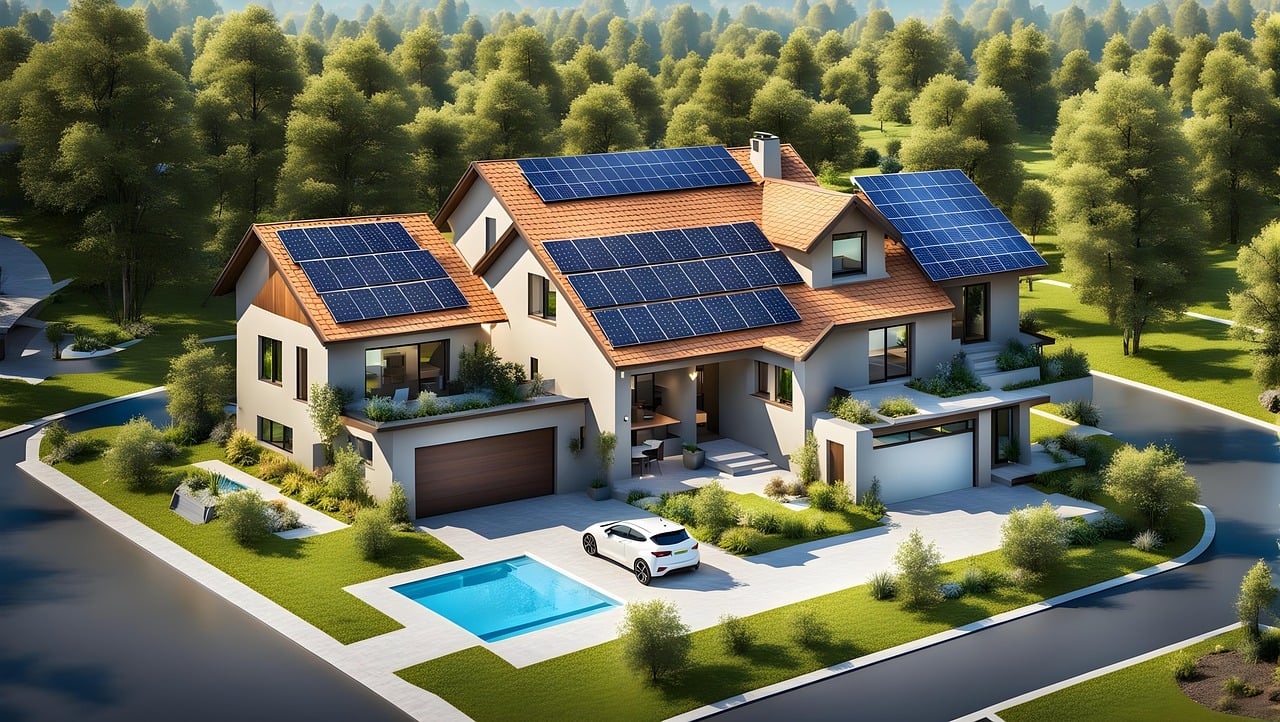
It’s All About the Amps: Your Philippines Solar System Guide
Excited about solar power but drowning in unfamiliar terms? You’re not alone. Between kilowatts, inverters, and system sizing, it can feel like you need an engineering degree just to get started. But don’t worry — we’ve got your back. Let’s talk about one of the most misunderstood parts of solar setups: amps.
To keep things clear, we’re going to skip the dry tech talk and use something easier to imagine — water flow. Think of this as your no-stress guide to making smart solar choices, without the headache.
What Are Amps — And Why Should You Care?
Amps are kind of the unsung heroes of your solar system. They don’t get the spotlight like watts or kilowatts, but they quietly handle one of the most important jobs — carrying electricity through your wires so everything in your home runs smoothly.
Here’s the water analogy:
-
Voltage is like water pressure.
-
Amps are like the flow rate — how much water (or electricity) moves through the system.
-
Wires and circuits are the pipes that carry the flow.
A nightlight might only need a trickle (like 0.1 amps), while your air conditioner? That’s a full blast — maybe 15 amps or more.
Solar Panels and Amps: What’s the Connection?
Solar panels don’t just give you a big pile of electricity. They generate a specific amount of current — in amps — based on how much sun they get and how they’re built. That number tells you how much power can actually flow through your system.
But here’s where things get tricky:
If your solar setup doesn’t produce enough amps to match your home’s needs, you could end up short. That means lights flickering, appliances not working right, or even running out of power when you need it most.
Sizing Your System: It’s All About the Match
When choosing a solar system, you want to make sure the amp output matches what your home actually uses. It’s like choosing the right size pipe for your water system — too small, and you won’t get the flow you need.
Here’s what to ask your solar provider:
-
What’s the amp rating on this solar panel setup?
-
How does that compare to my home’s electrical load?
-
Will it cover high-demand devices like air conditioners, water pumps, or ovens?
The Bottom Line: Don’t Ignore the Amps
Think of amps as the quiet powerhouse behind your solar setup. When sized right, they keep your energy flowing smoothly and your home running like a dream. When they’re too low, you’ll feel it — especially when you’re trying to cool the house or cook dinner.
So before you go all-in on your solar journey, take a minute to check the amps. It’s a small detail that makes a big difference in how well your system performs.
The Hybrid Hustle: Watch Out for This Solar Trap in the Philippines
You’ve learned about amps — the behind-the-scenes muscle that makes your solar system work. Now let’s talk about something a little trickier: hybrid solar systems. Some companies toss around the word “hybrid” to make a system sound better than it really is. Here’s how to spot the real deal and avoid getting misled.
What a True Hybrid System Really Includes
A real hybrid solar system is built around a powerful trio:
Solar Panels
These collect clean energy from the sun and power your home.
Battery Storage
This stores extra solar energy so you can use it at night or when the grid goes down. Think of it as your personal backup tank.
Grid Connection
This is your safety net. If your batteries run low or the sun isn’t shining, the grid kicks in and fills the gap.
When all three are working together, you get clean energy, backup power, and long-term savings. That’s what makes a true hybrid system worth the investment.
The Fake Hybrid: What You Might Actually Be Getting
Here’s where some solar companies cut corners:
Fake Hybrid #1: Just On-Grid
This system gives you solar panels but no batteries. When the power goes out, you’re in the dark. It’s just a fancy on-grid setup — not a true hybrid.
Fake Hybrid #2: Off-Grid Disguised as Hybrid
This system skips the grid entirely and may not be able to handle peak electricity loads, especially without enough amps. If it’s undersized, it’ll struggle when you run bigger appliances — and you might lose power when you need it most.
The problem?
Without batteries, it’s not a real hybrid. And if the system doesn’t have the amps to match your home’s needs, you’re buying a setup that won’t deliver when it matters.
Amp Awareness: The Best Way to Avoid the Hybrid Hustle
Knowing how amps work protects you from overpriced or underperforming systems. Here’s what to check:
-
Does the system include battery storage? Ask directly.
-
How many amps can it deliver? Make sure it’s enough for your peak usage — not just lights and fans, but AC units, refrigerators, or pumps.
-
Is the price realistic? If it’s too low, something’s probably missing.
The Bait and Switch: When Cheap Quotes Turn Into Costly Surprises
A shady sales tactic you need to watch for: the bait and switch. Here’s how it works.
The Setup (The Bait):
You’re shown a basic, low-cost solar system — a few panels, one inverter, maybe no batteries. It sounds great at first.
The Switch:
Once you’re interested, they reveal your house needs more — more panels, more inverters, a full battery bank, maybe even rewiring your electrical system. The price skyrockets.
Suddenly, that affordable setup turns into a complex, multi-million peso job — and you’re left wondering what just happened.
How to Protect Yourself
-
Always ask about amps. Make sure the system is powerful enough for your actual energy needs.
-
Don’t settle for vague answers. Ask about the number of inverters, battery types, and if your home will need rewiring.
-
Get more than one quote. Compare different solar providers. A good company will be honest from the start.
Empowered by Amps: Questions That Keep You From Getting Burned
Now that you understand how amps work and what a real hybrid solar system looks like, it’s time to turn that knowledge into action. The best way to protect yourself from solar scams? Ask smart questions.
A little skepticism is healthy when you’re making a big investment. So before you sign anything, here’s a list of what to ask — and why it matters.
Sizing Up the System: Will It Actually Power Your Home?
-
What’s my home’s estimated amp load?
This tells you how much power your home needs during peak use. -
What amp rating does the proposed system have?
You want to make sure the system can actually handle what you need — not just when the sun is out, but when you’re running the AC, fridge, and lights all at once. -
Can this system cover my peak electricity use?
A good system isn’t just about saving money — it needs to keep up when it counts.
Is It Really a Hybrid, or Just a Sales Pitch?
-
Does this system include panels, battery storage, and a grid connection?
If any of those are missing, it’s not a true hybrid. -
What’s the battery capacity in kilowatt-hours (kWh)?
This tells you how much stored energy you actually get to use when the sun’s not out. -
How do the battery and grid work together?
The installer should be able to clearly explain how your home stays powered day and night.
Beyond the Specs: Make Sure They’re Being Real With You
-
What’s the total cost, including installation?
Avoid surprises later. Ask about payment plans too. -
Any extra fees or permits I should know about?
If they skip this, you could be in for unexpected costs. -
What warranties do you offer?
Panels, batteries, and labor should all have some coverage. Get the details in writing. -
Can I talk to past customers?
If they can’t point you to any references or reviews, that’s a red flag.
Dig a Little Deeper: It’s Your Money and Your Roof
-
What’s the expected payback period?
This helps you understand when your savings will start to outweigh the cost. -
Are there any incentives or tax breaks I can apply for?
A good company should help you take advantage of any local perks. -
What’s the plan for maintenance and repairs?
You’ll want to know who to call — and whether it’s included.
Sunshine for Life Starts With the Right Questions
This isn’t just about going solar. It’s about doing it the right way — with a system that fits your needs, your budget, and your lifestyle.
When you understand amps, you’re not just a buyer. You’re a smart homeowner who knows what questions to ask and how to spot a deal that’s too good to be true.
So don’t rush. Get multiple quotes. Compare answers. And find a team you trust.
The right system will save you money, cut your grid reliance, and keep your home running smoothly — rain or shine.
You’ve got the knowledge. Now go find the right solar partner and let the sunshine work for you.

















